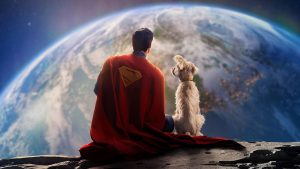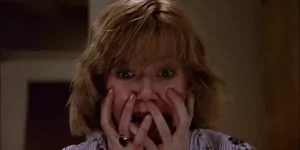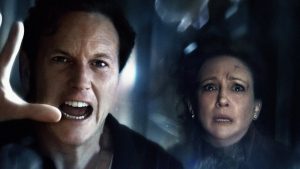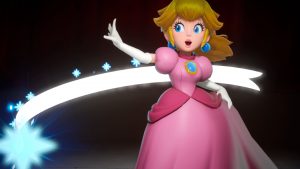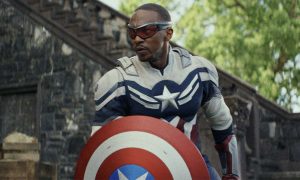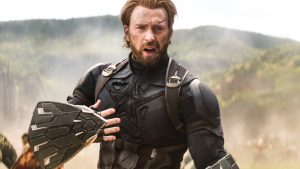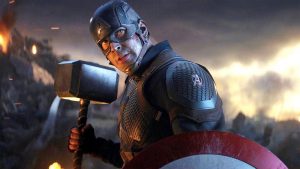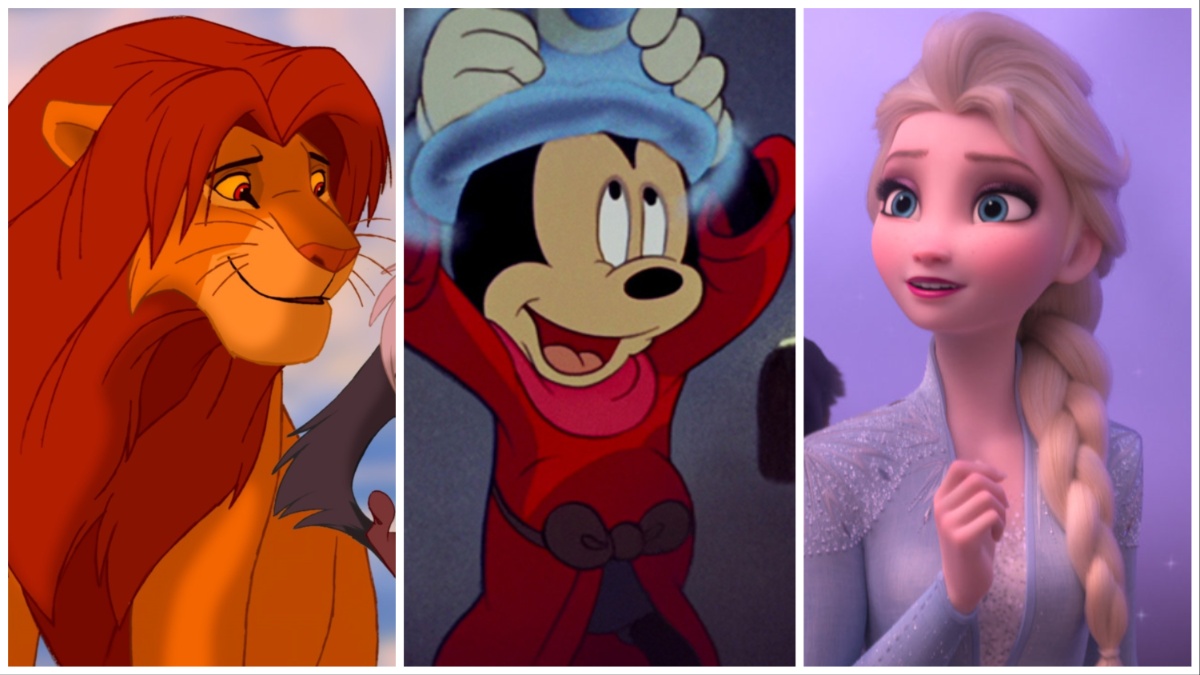
As Disney has been enthusiastically reminding us all year, 2023 marks the 100th anniversary of the founding of the Disney Brothers Cartoon Studio by Walt and Roy Disney. Walt was an animator whose previous company, Laugh-o-Gram Studio, which he founded with Ub Iwerks, had just gone bankrupt. Meanwhile Roy was still suffering from tuberculosis. Yet the studio they founded would come to be ranked number 53 on the Fortune 500 list of the biggest companies in the United States in 2022. More impressive still, the company has achieved the ever elusive mystique of being a brand adored and respected around the world.
The Walt Disney Company (as it has been known since 1986) has expanded into all sorts of areas over the years, from theme parks to superhero movies to streaming documentaries, but the heart and soul of the endeavour is still, at the end of things, Walt Disney Animation Studios, which was put into its own division in 1986. The studio’s latest animated feature film, Wish, is its 62nd, and it continues Disney’s century-old tradition of constantly innovating and evolving its art, sound, and storytelling.
Here is how it grew from a mouse to a mountain.
Art and Animation
Disney animated movies have experimented with various art styles over the years. Animation evolves and changes with the times and the fashions, and in some cases a unique art style was developed to suit that particular film. Hercules (1997), for example, recruited political cartoonist Gerald Scarfe to develop an art style inspired by Classical Greek vase paintings while both Fantasia (1940) and Fantasia 2000 used various art styles to suit each individual piece of music featured.
The process of making animated films has also evolved over the years. In the documentary Waking Sleeping Beauty (available on Disney+), Jeffrey Katzenberg recalled that when he pointed out problems with The Black Cauldron (1985), he was told, “You can’t edit an animated movie;” he was adamant that you can and sometimes must. These days, of course, editing animation is quite a bit easier thanks to the use of computer-generated animation. Wish is the first Disney film since 2011’s Winnie the Pooh to use 2D animation, but it is combining it with 3D computer-generated animation using the same sort of techniques as the brilliant Spider-Verse films, with an artistic style evocative of classic 2D Disney animated feature films.
“Traditional” and CG Animation
All forms of animation start with a storyboard which outlines the whole of the film. This process is often used for live-action films as well, especially if they require a lot of computer-generated special effects. Disney even brought out a board game in the 1990s based around storyboards in which you had to roll dice to put together a storyboard for a classic Disney film; it was really good fun and a nice simple game for young children.
In traditional hand-drawn animation, character designers produce model sheets to finalize each character’s appearance and how they move. In computer animation, 3D animators create virtual skeletons with a series of key movements using digital software. In computer animation, computer programs then handle movements between these core moves. In traditional animation, animators produce individual drawings for every moment of the film—24 frames per second, that is, 24 separate drawings for every second of screen time. These are then passed to the Ink and Paint department to be outlined in ink and, finally, painted with color. During the 1940s, this department was primarily staffed by young women.
Disney animation has undergone a few shifts in style over the years. The most obvious was the shift to 3D CGI. Having used some computer generated imagery and techniques to speed things up (and make editing possible) in The Black Cauldron, Disney used computer animation for some backgrounds in The Great Mouse Detective (1986), and for a two-minute sequence inside a clock tower. Computer animation allowed the camera to pan around a three-dimensional space rather than back and forward across a flat surface.
They put this to real effect in the ballroom scene 1991’s Beauty and the Beast. The ballroom was the first entirely computer generated environment, with only the characters being hand-drawn. This was done so that the camera could swirl around them as they danced. This was followed with Aladdin in 1992, which featured one of the earliest computer generated speaking characters in a feature film, the Cave of Wonders, which was CGI as it was technically part of the background (the very first was a glass knight in The Young Sherlock Holmes in 1985). Aladdin’s Magic Carpet was also Disney’s first hybrid of hand-drawn and computer animation, with CGI used to fill in its pattern.
Although computer animation was eventually used for all backgrounds, as well as for particular scenes like the wildebeest stampede in The Lion King (1994), Disney was fairly slow to abandon its traditional animation entirely. A decade after the first fully CGI movie (Pixar’s Toy Story in 1995) Chicken Little, the first fully computer-animated WDAS picture, was released. The two Enchanted movies (2007 and 2022) may have skewered traditional Disney animation, but they are also a love letter to it, with plenty of older moviegoers nostalgic for the lost warmth that hand-drawn animation offered.
Music and Voice Actors
Mickey Mouse shot to fame in one of the first fully synchronized sound cartoons, “Steamboat Willie” in 1928, and both voice acting and music have been key to the success of Disney animated feature films ever since. In fact, the first voice of Mickey Mouse was Walt Disney himself until a combination of smoking and doing Mickey’s high falsetto regularly resulted in some vocal damage in the 1940s. Ironically, the only Disney animated classic in which Mickey has a substantial role is Fantasia, in which he only has one speaking line—but that is because Fantasia is all about the other key ingredient to the sound of a Disney film, the music.
Snow White and the Seven Dwarfs (1937), as well as being the first full length animated feature film, was also the first movie to have a commercially issued soundtrack released. Music has been a key ingredient to the success or failure of Disney animated films ever since, especially in the hugely successful period known as the Disney Renaissance, which lasted roughly between 1989 and 1999.
While songs had never disappeared entirely from Disney animation, they had become a much less integral part of the films during the 1970s and 1980s. For example, The Black Cauldron did not include any songs at all. All that changed when it was decided that The Little Mermaid (1989) should be a full musical, with numerous songs sung by the characters and forming an integral part of the story. The songwriting team from 1982’s off-Broadway hit Little Shop of Horrors, composer Alan Menken and lyricist Howard Ashman, were hired and the rest, as they say, is history. Ashman tragically passed away from complications due to AIDS in 1991 after contributing to the Oscar-winning music of Mermaid, Beauty and the Beast, and Aladdin (and more or less defining what a modern Disney musical’s storytelling structure should be), but Menken continued to work on numerous Disney films through the 1990s and some after, most recently animated classic Tangled in 2010 and Disenchanted in 2022.
Tim Rice had to finish Ashman’s work on Aladdin, which had been Ashman’s original pitch, but the music was not the only notable thing about that film. Comedy superstar Robin Williams was hired to voice the wacky, over-the-top character of the Genie on the agreement that neither his name nor image would be used for marketing—a condition that perhaps inevitably was not met.
Aladdin was not the first Disney film to include celebrity cast members. Robin Hood (1973) cast big name British actors Peter Ustinov and Terry Thomas as its villains, and Billy Joel and Bette Midler both appeared in Oliver and Company (1988). But the impact of the Genie as well as the next two films, The Lion King (1994) and Pocahontas (1995), was huge. Pocahontas also featured a major star in Mel Gibson as John Smith, and The Lion King was filled with celebrity voices including James Earl Jones, Whoopi Goldberg, Matthew Broderick, and Nathan Lane, not to mention songs by Elton John. Thanks in no small part to the success of Aladdin and The Lion King, animated movies for the past couple of decades have been filled with star voices.
Those voices also include, like The Lion King, both actors and singers. After Enchanted made the baffling decision to cast Broadway star Idina Menzel and then not have her sing, Frozen (2013) famously put that right with the bane of every parents’ existence, the mega-hit “Let It Go.” Hits like that and the cachet of a Broadway star like Menzel have ensured that Disney’s recent animated classics are, like The Little Mermaid and Beauty and the Beast before them, fully fledged musical films.
Storytelling
Music alone is not what makes a movie a success though. The thing that matters most of all is the storytelling.
Disney’s animated classics (the canon of the company’s animated feature films), are usually divided into a series of seven or eight “eras:” the Golden Age (1937-1942), Wartime (1942-1949, and yes we know that does not actually correspond to the years of World War II), Silver (1950-1967), Bronze (1970-1977/88), the optional “Dark Ages” (1980-1988), Renaissance (1989-1999), Post-Renaissance, or “Experimental” (1999-2008), and Revival (2009/2010-present).
Some of these eras are marked by major shifts in art or music styles—the Renaissance, for instance, is dominated by musicals following Ashman and Menken’s success while the Revival is mostly computer-animated rather than hand drawn, which is partly why it is sometimes listed as beginning with Tangled in 2010 rather than The Princess and the Frog in 2009.
The main dividing factor between these eras, though, is the story-telling. Those who plump for 2009 as the beginning of the Revival era are pointing to the fairy tale inspiration and princess theme of The Princess and the Frog as the beginning of Disney animation finding its way again after a fallow period. The alternative label “Experimental” for the noughties (rather than “Post-Renaissance”) better reflects the variety of storytelling ideas found in that period, much of it focusing on science fiction or anthropomorphic animal stories, as well as Disney’s early experiments with fully computer animated films. The key thing the “Bronze” and “Post-Renaissance” eras have in common is that the films of these periods were not as successful as the era that came before them—and that carries down to the storytelling.
Fairy tale adaptations are one of the big draws to get an audience into a Disney film, but even that is not the absolute key to success. The Lion King is one of Disney’s most successful animated classics, and that is an original story loosely modelled on Shakespeare’s Hamlet. The thing that makes the great Disney films great is their attention to character, plot, and engaging the audience. Snow White and the Seven Dwarfs, for example, could have been a simple, straightforward story focusing on the love story between the princess and the prince—and for all Disney’s recent self-flagellation about people falling in love too quickly, they did add a meet-cute scene between the two before the prince is moved enough to kiss her apparently dead body, so they were trying.
More important than that, though, is that rather than give audiences seven interchangeable dwarfs, Disney gave them all prominent characteristics, and then made sure no one could forget them by naming each one after their biggest personality trait. As writing techniques go, it’s a little bit on the nose, but it works, and audiences come away loving all of those individual dwarfs (especially Grumpy).
At the same time as they were developing Snow White, Disney was also introducing Donald Duck as a way to keep Mickey Mouse cartoons fresh and entertaining, as they were under pressure to avoid making Mickey himself look like a bad influence, which was keeping him back from some of the slapstick humor used in the cartoons, like punching people. This had a further impact on the animated feature films; Fantasia started out as an attempt to bring Mickey back into prominence as, perhaps inevitably, Donald was starting to take over and become more popular. And all of it comes back to a commitment to showcasing interesting and exciting characters.
Disney’s framing of the stories told in their animated classics has also evolved over the years, but at the core of it is a commitment to presenting these stories as stories—that is, there is usually a framing device that echoes a child sitting down for a bedtime story that places the events of the film into a storytelling space which takes place in a slightly different version of reality, a place where magic can happen. In the older films, like Snow White and 1959’s Sleeping Beauty, this took the form of a literal book of fairy tales that opened at the beginning of the film to start the story.
As time went on, the framing devices evolved. Robin Hood combined the book with a narration sung by Alan-a-Dale, which talked specifically about “stories” of Robin Hood, describing this as the animal world’s story. Later, songs took over from books; The Little Mermaid opens with sailors singing about mermaids, which is echoed much later in Frozen as ice harvesters sing about a frozen heart.
Aladdin is a story told by the Genie—or is he just a really good salesman?—a framing device that becomes part of the story in the 2019 live-action remake. Hercules uses the Muses as a Greek chorus in the tradition of ancient Greek tragedy to fit the setting. Whatever form it takes, this technique is part of what makes the really great Disney animated classics feel so magical. They are stories, tales, events that take us out of the mundane world and into the magical world promised by that also-evolving castle logo and familiar musical phrase.
Whenever a film studio is in trouble, it’s very easy for producers to latch on to something that seems tangible and obvious to “fix,” to get them back on track. No one wants two-dimensional animation anymore, so make everything CGI! Everyone wants cinematic universes and sequels, make lots of them! No one wants cinematic universes and sequels, don’t make any!
These solutions may seem easy, but they are not the real solutions. The one overriding thing that brings people back to Disney animated classics over and over again is the storytelling. It’s what separates the Bronze Age from the Golden, the Experimental Age from the Revival. Fairy tales are part of the draw, but that is because they are simple, meaningful stories that have stood the test of time. Tell good stories, and the people will continue to come for another hundred years and more.
The post The Evolution of Disney Animation Over 100 Years of Art appeared first on Den of Geek.
